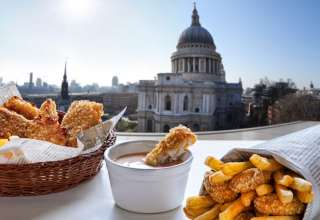Absinthe, associated with madness and murder, has a fearsome (and undeserved) reputation. Felicity Carter visits some Parisian haunts of the green fairy
Absinthe is a highly alcoholic, green-hued, anise-flavoured spirit distilled from a roster of botanicals that can include hyssop, coriander and peppermint. While these can change, depending on who is making it, there are three herbs that must be present for it to be absinthe: anise, fennel and Artemisia absinthium, or wormwood. This last is a bitter plant that contains a chemical called thujone, long rumoured to have mind-altering effects.
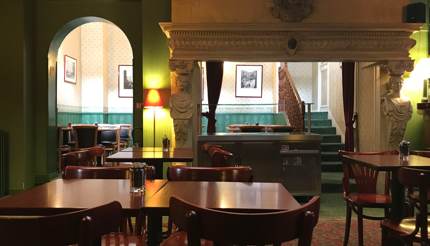
It certainly seems to have had an effect on a Swiss farmer named Jean Lanfray. In 1905, Lanfray drank two glasses of absinthe, and later that day shot his two daughters and pregnant wife. Within weeks of the murders, more than 80,000 people in Switzerland had signed an anti-absinthe petition. Other countries soon followed, including France in 1915. L’Heure Verte—the green hour—beloved of Oscar Wilde, Edgar Degas and Vincent Van Gogh, was snuffed out.
It took until 2011 for the French government to lay this terrible history to rest, and lift the absinthe bans. Now, anybody of legal drinking age can buy it. What gives?
Why the bad reputation?
While wormwood has been distilled since the 1500s, the drink now known as absinthe dates from the late 18th century, when a sweet version was sold as a medicinal elixir; Henri-Louis Pernod saw its aperitif potential and set up the Pernod Fils absinthe company in 1805. Absinthe took off in the 1840s when French soldiers, who drank it to ward off disease while fighting in Algeria, brought the habit home with them.
Then, in the second half of the 19th century, came the phylloxera bug that destroyed France’s wine industry. As wine prices rose, the number of absinthe distillers exploded. The business quickly attracted counterfeiters, who churned out fakes adulterated with poisonous chemicals and dyes. Stories about hallucinations and convulsions began circulating, fuelling the prohibition movement.
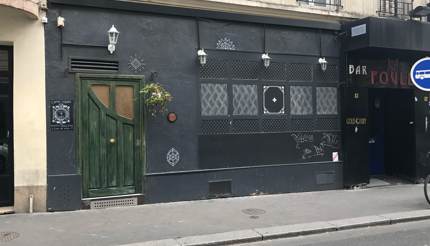
But absinthe didn’t become illegal everywhere in Europe – in the 1990s, the Czechs came up with a neon green version, complete with flaming sugar cube – and as interest in old practices grew, chemists and distillers began tracking down historic bottles and analysing them. They realised that two things had probably tarnished absinthe’s reputation. One was poisonous counterfeits. The other was the varying levels of the stimulant thujone. Only small amounts survive the distillation process, but this may be enough to mask the alcohol – in other words, absinthe drinkers were fooled into thinking they were more sober than they really were. Given that absinthe is generally 65 per cent to 75 per cent alcohol by volume, it seems that the true culprit behind ‘absinthism’ was alcohol poisoning.
Even the the Lanfray murders weren’t what they seemed. Along with the absinthe, Mr Lanfrey had also drunk a liqueur, a cognac, seven glasses of wine, coffee laced with brandy and then more wine when he got home. In fact he was so drunk, the real question is how he managed to aim and fire his gun.
All of which means there’s very little chance of cutting your ear off, a la Vincent Van Gogh, after just one glass.
A magic potion
Most people aren’t going to drink absinthe for the taste, at least not the first time. It has a powerful flavour, a potent blend of liquorice, earth and herbs and a pronounced bitterness. It takes some getting used to. It does reward the effort, though, because it’s complex herbal drink with many layers to explore – and it can offer moments of sparkling clarity.
It’s also a lot of fun, because there’s a whole ritual around it. First, a fountain – a glass vessel with taps – is placed on the table. Next come thick glasses, which have absinthe sitting in the ‘reservoir’ at the bottom. Ornate slotted spoons are laid across the glasses, and a sugar cube is placed on top. Water drips through the sugar cube into the glass, and moments later, the magic happens: the absinthe ‘louches’, turning a milky green colour.
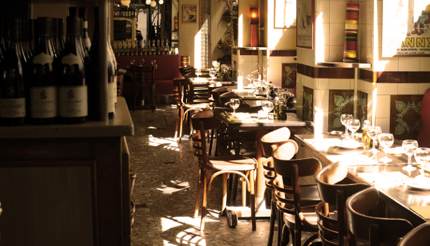
Where to drink absinthe in Paris
For a true taste of the Belle Époque, ignore places that have ‘absinthe’ in their name; their range is often limited to a single dusty bottle. Instead, head for Pigalle, at the foot of Montmartre, home of the Moulin Rouge. The sex shops here (Eiffel Tower-shaped vibrator, anyone?), are gradually giving way to trendy eateries and bars serving craft beers, but a vestige of absinthe culture can be found at the Hotel Royal Fromentin. It’s quiet reception area is complete with Art Nouveau fittings, including green walls and an ornate fireplace. The available absinthe is the Verminthe from Provence, a traditional version bristling with herbs and spices that, at 45 per cent, is relatively low in alcohol, and approachably sweet.
A more hard-core experience can be had over the road at Lulu White, a stylish nightclub named after a notorious New Orleans brothel keeper. Between 10 and 15 different absinthes are on offer; co-founder Timothée Prangé says having so much absinthe actually handicapped the club when it opened two years ago. He blames the media: “Journalists just speak about the absinthe, and in France, absinthe means mad alcoholics.” Things are now looking up, however, and people are more willing to try it.”
If you want food to soak up the alcohol, try the tiny Chez Janou, tucked away in the trendy Marais district, where the cuisine is Provencal and you can contemplate the well-heeled residents passing the window as you dine. The menu features 25 absinthes for €8.00 a glass; many are recreations of original recipes. Don’t ask for recommendations, though. I did, and was told by the waitress, “I don’t like absinthe.”
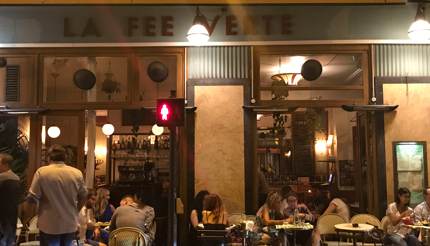
For late night experimentation, head for Le Fée Verte, named by the Times of London as one of the ‘six coolest bars in Paris’. Inside it’s all traditional panelling and mirrors; outside it’s tiny tables on the pavement. It’s known for its burgers but the staff can turn absinthe taps with aplomb.
There really is nothing like absinthe, as Ernest Hemingway discovered: “Got tight on absinthe last night. Did knife tricks.” Maybe you will, too.



